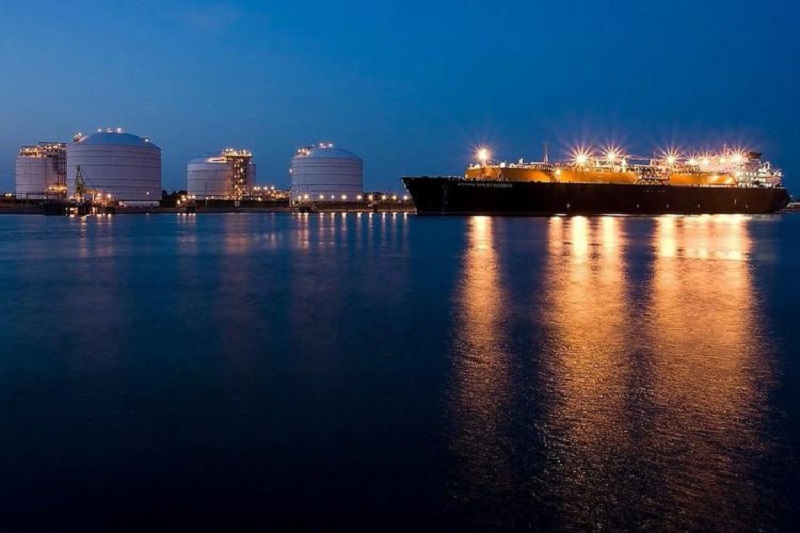Venezuela Close to Approving Offshore Gas License with Trinidad, Shell
(Reuters) — Venezuela is close to approving a license for Shell and the National Gas Company of Trinidad and Tobago to develop a promising offshore natural gas field and export its production to the Caribbean country, two people close to the matter said.
The license could set in motion a long-running effort by Trinidad to boost its gas processing and petrochemical exports, while providing Venezuela with a much-needed extra source of cash.
The two countries aim to speed cross-border energy development since the U.S. in January issued a two-year authorization allowing the field's development.
Venezuela, which holds Latin America's biggest gas reserves, and neighboring Trinidad, the region's largest LNG exporter, would complement each other's needs to produce and export gas.
Both nations are discussing a 25-year exploration and production license for the Dragon field, which holds up to 4.2 trillion cubic feet of gas and lies in Venezuelan waters near the maritime border between the two countries.
Some terms are still to be settled, but if all goes well a deal could be signed in coming days, the people said.
Shell would operate the project with a 70% stake and Trinidad's NGC would hold the remaining 30% under proposed terms, the people said.
Venezuela's state-run oil firm PDVSA, which discovered Dragon's reserves and paid for existing infrastructure, would not have a stake in the project, but Venezuela would receive cash or a portion of gas production as royalties.
PDVSA in 2013 finished testing gas output at Dragon, but the field has never been commercially active due to the company's lack of capital and, more recently, U.S sanctions.
The U.S. last month temporarily eased sanctions on Venezuela and amended the authorization for Dragon, allowing Caracas to receive proceeds from gas sales. Since then, negotiations have moved faster, a third person said.
Trinidad's Energy Minister Stuart Young in early October said the parties had begun price negotiations for Dragon's gas.
Shell declined immediate comment. NGC referred questions on the talks to Trinidad's energy ministry. The ministry, PDVSA, and Venezuela's oil ministry did not reply to requests for comment.
Volumes, Prices, Pipelines
The proposed license would allow an initial volume of 300 million cubic feet per day (MMcf/d) of Venezuelan gas to go to Trinidad for LNG production, starting in late 2026, and an additional 50 MMcf/d to petrochemical plants, the people said.
Trinidad and Tobago has the capacity to process 4.2 billion cubic feet per day (Bcf/d) into LNG, petrochemicals and power, but its gas production is about 2.7 Bcf/d.
The lack of gas has led to the shutting of one of its LNG processing units.
The parties have agreed in principle to a price that would land gas across the border at less than $3 per mcf, the sources said.
PDVSA has pushed for a signature bonus of some $65 million to be paid upfront. But Shell and NGC want to tie any payment to certain milestones, such as first gas, the sources added.
The parties are considering two separate lines to transport the gas: one partially built by PDVSA to Guiria, on Venezuela's eastern coast. A second line would connect to Shell's Hibiscus field in Trinidad.
If the parties agree that some of the gas will pass through Guiria, an additional short pipeline linking Guiria to Point Fortin, home of Trinidad's LNG plants, might be needed.
That option would allow Venezuela to process the gas on its shore, keeping what it needs to supply the domestic market and potentially exporting gas liquids in the future. But adding a new line might extend the time for the project to begin output to five years, rather than three years as hoped, the people said.
Related News
Related News

- Enbridge Plans 86-Mile Pipeline Expansion, Bringing 850 Workers to Northern B.C.
- Intensity, Rainbow Energy to Build 344-Mile Gas Pipeline Across North Dakota
- U.S. Moves to Block Enterprise Products’ Exports to China Over Security Risk
- Strike Pioneers First-of-Its-Kind Pipe-in-Pipe Installation on Gulf Coast with Enbridge
- 208-Mile Mississippi-to-Alabama Gas Pipeline Moves Into FERC Review
- U.S. Pipeline Expansion to Add 99 Bcf/d, Mostly for LNG Export, Report Finds
- A Systematic Approach To Ensuring Pipeline Integrity
- 275-Mile Texas-to-Oklahoma Gas Pipeline Enters Open Season
- LNG Canada Start-Up Fails to Lift Gas Prices Amid Supply Glut
- Kinder Morgan Gas Volumes Climb as Power, LNG Demand Boost Pipeline Business





Comments